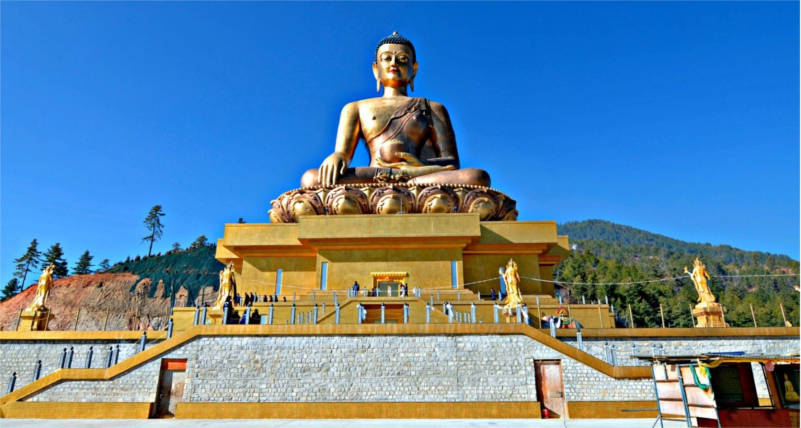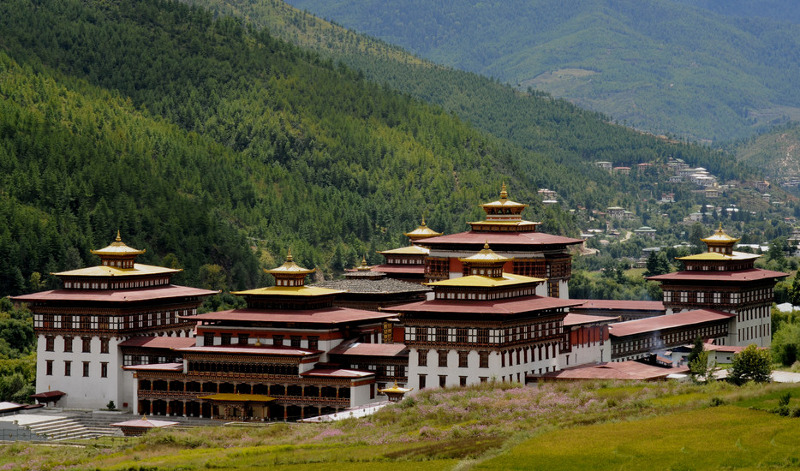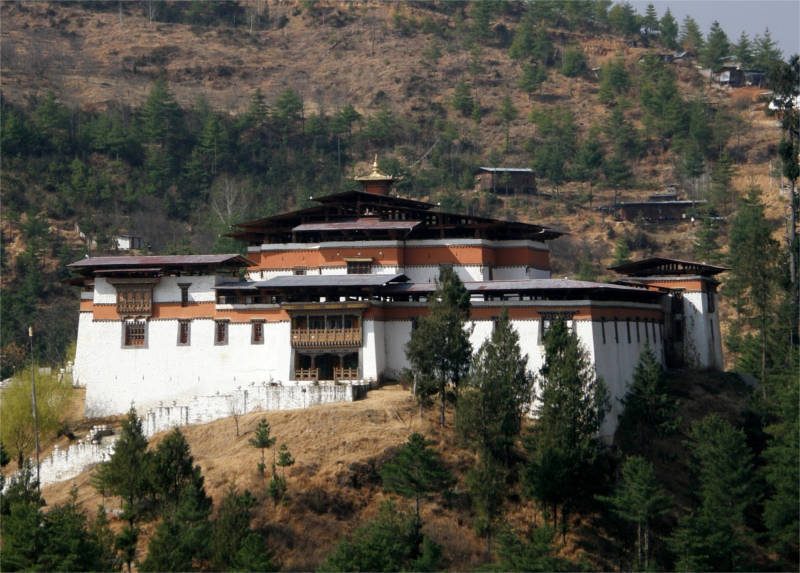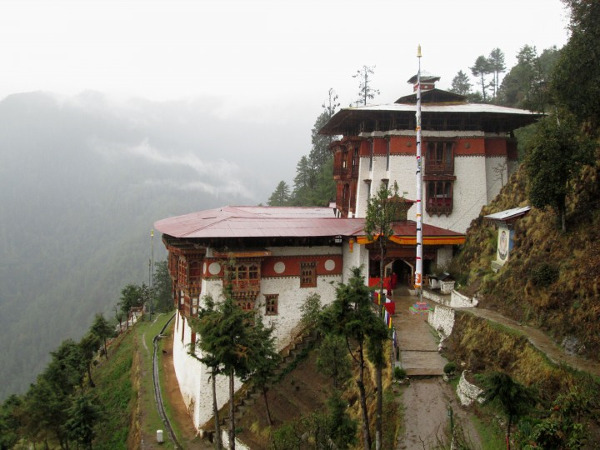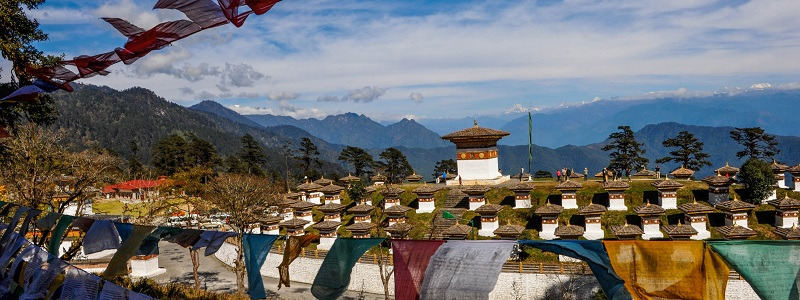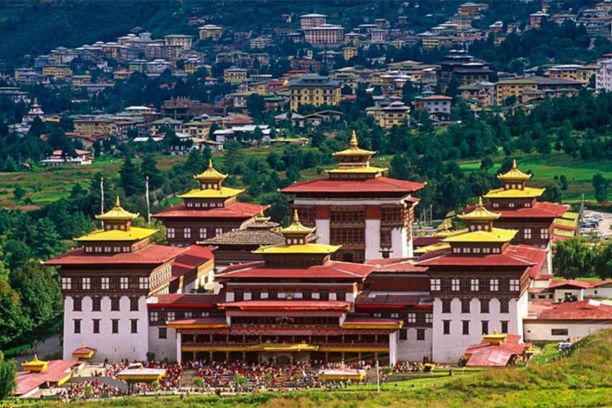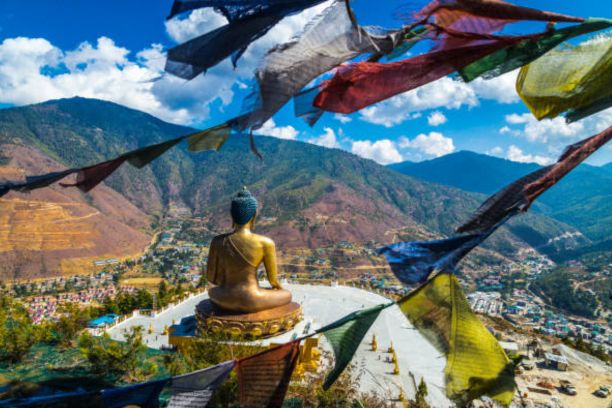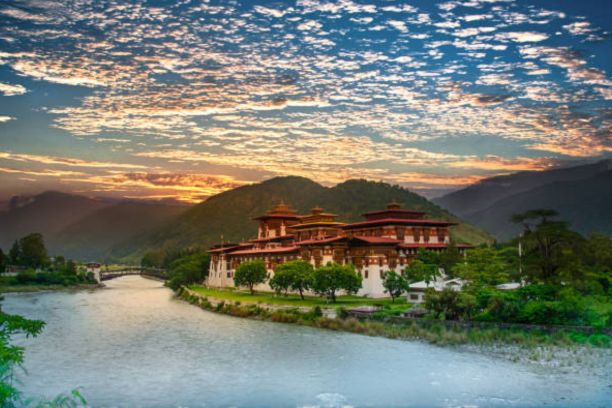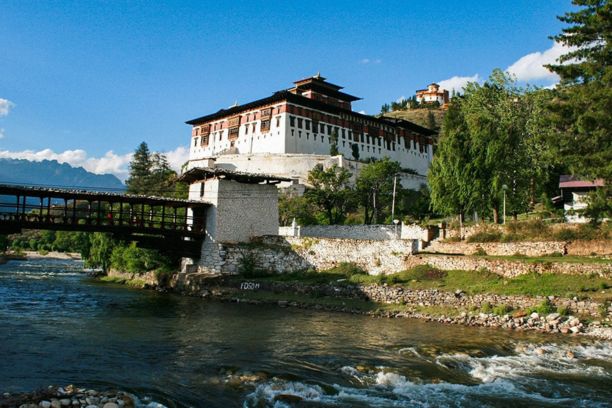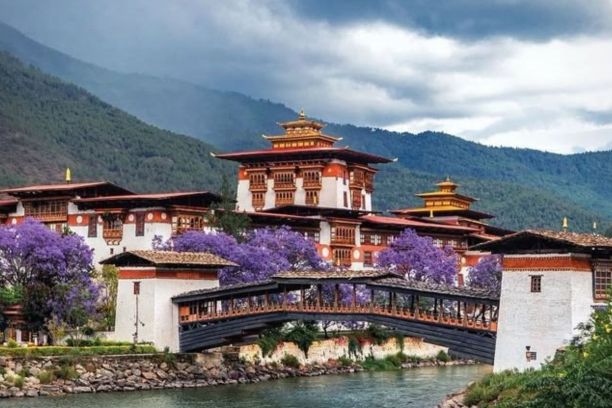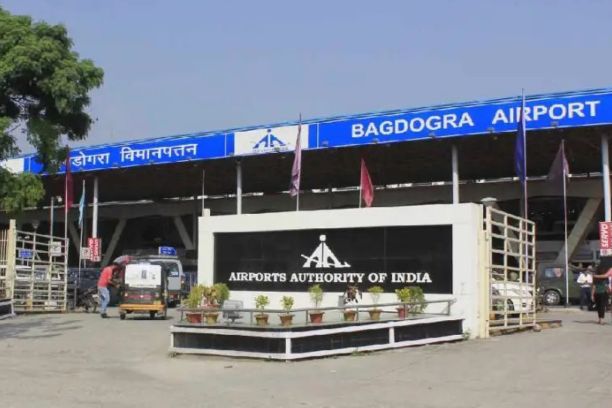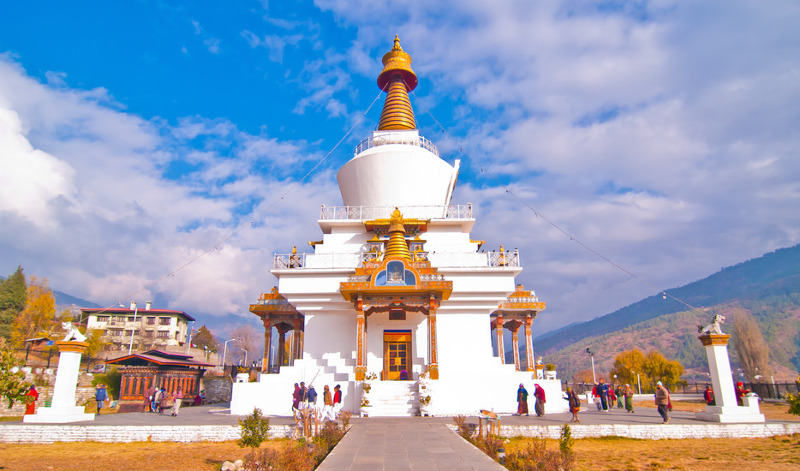
Memorial Choeten
Memorial Choeten (stupa). It was built in 1974 by Her Majesty the queen mother Phuntsho Choden Wangchuck in the memory of her son, Third king of Bhutan, Jigme Dorji Wangchuck.
This stupa today has become a spiritual nerve center of Thimphu city. One will witness people from all walks of life circumnavigating and prostrating around this stupa. Elderly people who have come from far away villages to stay with their children and those who reside within Thimphu make their way early in the morning and spend their whole day chanting prayers and circumnavigating the stupa.
